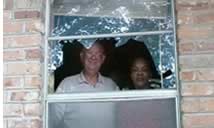Module 2: The Victim Experience
The Road to "Normal": Stages of the Victim Experience
I. SHOCK/DISBELIEF (Immediately afterward and up to 1 week later)
Physical Reactions
Shock—Loss of concentration, blood pressure fluctuations, rapid pulse, pallor, etc.
Disturbances in patterns of sleeping or eating
Difficulty concentrating
Emotional Styles
Controlled—Flat, emotionless, calm, composed, numb (internalized)
Expressive—Upset, nervous, angry, anxious, tense, fearful (externalized)
Needs
Medical—Physical injuries or preexisting conditions
Emotional—Fear, helplessness, denial, guilt, degradation, anger, mood swings, depression, anxiety, fatigue, loss of concentration
Thoughts
Tries to block memories
Tries to "undo" the crime
Thinks about it frequently
Unable to cope or understand the experience
II. OUTWARD ADJUSTMENT (Up to 1 year later)
Physical Reactions
Psychosomatic complaints
Emotional Styles
Denial or avoidance
Does not want to talk or think about the incident
Needs
Return to normal routines
III. REORGANIZATION (1 year or more afterward)
Physical Reactions
Possible increase in health problems or alcohol and drug abuse
Psychological
Nightmares
Flashbacks
Fear of crowds or people in general, fear of being alone, of sleeping, or of situations that remind the victim of the crime
Social
Trades freedom for security
Normal routine upset
Level of functioning reduced
Avoids leaving home
Drops out of school, absent from work
Avoids or clings to family and friends
Changes home, job, or telephone number
Strong need for a change of scenery or to "get away"
Family conflicts
Feeling of loss of support from intimates, violated trust
Feeling of loss of privacy
Angry at loss of freedom
IV. RESOLUTION (THE ROAD TO "NORMAL")
General Condition
Feels safe and in control again
Able to trust again
Free from fear
Blames criminal, not self
Feels "normal" again
Expresses and resolves anger



